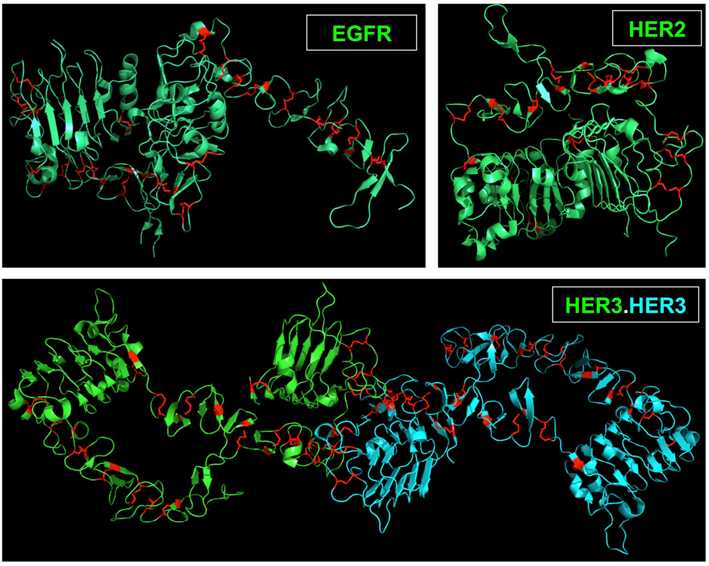
EGFR, HER2, and HER3, contribute to the initiation and progression of human cancers, and are therapeutic targets for monoclonal antibodies and tyrosine kinase inhibitors. An important source of resistance to these agents arises from functional redundancy among EGFR, HER2, and HER3. EGFR family members contain conserved extracellular structures that are stabilized by disulfide bonds. Compounds that disrupt extracellular disulfide bonds could inactivate EGFR, HER2, and HER3 in unison. Here we describe the identification of compounds that kill breast cancer cells that overexpress EGFR or HER2. Cell death parallels downregulation of EGFR, HER2, and HER3. These compounds disrupt disulfide bonds and are termed Disulfide Bond Disrupting Agents (DDAs). DDA RBF3 exhibits anticancer efficacy in vivo at 40 mg/kg without evidence of toxicity. DDAs may complement existing EGFR-, HER2-, and HER3-targeted agents that function through alternate mechanisms of action, and combination regimens with these existing drugs may overcome therapeutic resistance.
